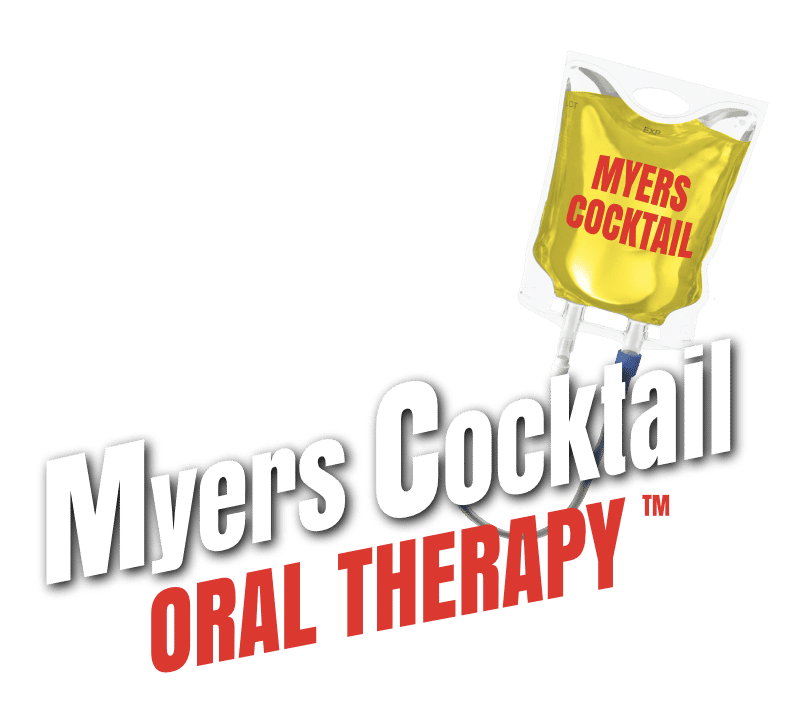No products in the cart.
Research
Backed by cutting-edge research, Myers Cocktail Oral Therapy uses more than 24 life-giving micronutrients whose benefits are supported by over 200 Pub Med studies.
In 2021, our team performed a pilot study incorporating Myers Cocktail Oral Therapy and IV nutrient therapy and the micronutrient enhancement and reported benefits were amazing!
If you'd like more information about the study we performed, contact us at info@myerscocktailoral.com
Our Groundbreaking 2 Country, 3 Arm Pilot Study Establishes the Need for Oral Support With IV Nutrient Therapy
We extend and enhance the many benefits of IV therapy!
Below we've listed of some of the life-giving nutrients we've included in Myers Cocktail Oral Therapy, describing the incredible results from our study with related research on each nutrient.
Vitamins

Vitamin B Complex
The Myers Cocktail Oral Therapy oral study establishes that B vitamins play a vital role in maintaining healthy brain function and activity that supports a sense of well-being.
B vitamins are crucial in the metabolic processes of the body. Metabolism includes: catalyzing the catabolism of carbohydrates, fats, and proteins into energy molecules; conversion of food into the building blocks of cellular structure as proteins, lipids, and nucleic acids; elimination of metabolic wastes; and the intermediate processes of digestion and intra- and extra-cellular transportation. We saw evidence of this metabolic facilitation in the fact that all Study participants stated that they enjoyed increased energy levels. The Study participants also noted an improvement in mood. We noted a rise in the serotonin levels of the Study participants, and that serotonin production is dependent upon activated B6 (Pyridoxal 5-phosphate) in its conversion from 5-Hydroxytryptophan to serotonin.

Thiamin
Vitamin B1 is known as thiamine (or thiamin) and its primary active/coenzyme form is Thiamine diphosphate, which is easily produced by a reaction between Thiamine and ATP. Thiamine plays an essential role in the conversion of glucose, amino acids, and lipids into energy. Thiamine is also essential in the development and maintenance of healthy nervous system function.
References:

Riboflavin
B2, is known as riboflavin (the active form is riboflavin 5-phosphate). Riboflavin forms FMN (flavin mononucleotide) and FAD (flavin adenine dinucleotide) which are involved in energy metabolism, cell respiration, antibody production, growth, and development. Riboflavin is essential for the metabolism of carbohydrates, proteins, and fats. A primary role of thiamine is in helping to convert carbohydrates into ATP, the biochemical energy currency of the body. All study participants stated increased energy levels was one of the many benefits of using oral therapy.
References:

Niacin
Vitamin B3 is known as niacin and nicotinic acid. The active coenzyme forms are NAD+ and NADP. The deficiency state of niacin is pellagra, and is seen in malnutrition and alcoholism. Niacin when is administered at high doses, over 30mg, can cause flushing if taken on an empty stomach; nicotinamide does not produce this effect, but it does not reduce cholesterol. Niacin can be formed from tryptophan; thus, low niacin can cause tryptophan depletion and serotonin deficiency. In all three arms of the study 75% of the participants experienced a reduction in cholesterol after consuming OT supplement.
References:

Pantothenic Acid
Vitamin B5, known as pantothenate, is supplemented as pantothenic acid and calcium pantothenate (with an its active form is Coenzyme A). Pantethine is two pantetheine molecules bound together with a cysteine molecule, which allows the bypass of steps in the synthesis of Coenzyme A. Pantothenate plus ATP forms Coenzyme A in a four-step process. Coenzyme A is one of the five enzymes in the citric acid cycle, and is central to the metabolism of glucose and lipids. Pantethine is used for lowering cholesterol, as was seen in the results of the study.
References:

Vitamin B6
Vitamin B6, known as pyridoxine (the active form is pyridoxal 5 phosphate) is required for gluconeogenesis and glycogenolysis as well as in the synthesis of amino acids, carbohydrates, and lipids. Pyridoxine is converted into P5P by pyridoxal kinase by reaction with ATP. P5P participates in 140 cellular reactions, but there is a unifying simplicity in this broad spectrum of biochemical reactions, namely, the catalysis of reactions with a lysine-derived molecule. From this molecule, P5P supports reactions such as: lymphocytes producing interleukin-2; heme synthesis for hemoglobin; the synthesis of serotonin, dopamine, histamine, GABA, and ornithine; and transamination, carboxylation, deamination, and racemization of amino acids. Note: in the Study, the level of serotonin was increased by 109%, and that serotonin is a mood elevating hormone – an effect seen in all study participants.
References:

Folic Acid
Folate is one of the B vitamin complex and is also known as B9. The commercially supplemented form of folate is folic acid, but the active form of folate supplementation is 5-methyltetrahydrafolate (5MTHF). Folate is required to make DNA; therefore, folate is important for cell division, red blood cell production, protein metabolism, and nucleic acid production. In addition, folate has been linked to mental health, as it is important for brain function and other processes of the nervous system. Three well-known neurotransmitters that affect mood and cognition include serotonin, dopamine, and norepinephrine. These neurotransmitters are made via chemical processes involving folate. (1)
Folic acid, the commonly supplemented form of folate, is not bioactive, and must be biotransformed before it is active. L-methylfolate, on the other hand, is a bioactive form of folate. Compared to folic acid, L-methylfolate is better absorbed by the gastrointestinal tract. In addition, it has less potential for drug interactions than folic acid. (1)
Several studies have shown a positive impact when adding L-methylfolate supplementation to SSRIs/SNRIs in depressed persons who have not fully responded to antidepressant medication. Adding L-methylfolate to antidepressant medication can both increase their onset of action and effectiveness (2).
The addition of L-methylfolate calcium in the OT supplementation showed a positive outcome as all participants experienced an improvement in their overall health by 100%, confidence level by 39%, mental processing speed by 76% and mental alertness by 44%. To gain a better understanding of these effects, participants were asked to stop OT supplementation and were asked to fill out a survey based on their experience. After termination, 80% of the participants reported that energy was not as good, did not sleep as well, and wanted to know when the OT supplement would be available.
References:

Vitamin B12
B12, known as cobalamin, (the active forms are methylcobalamin and adenosylcobalamin) is the most complex molecule of the eight B vitamins. B12 is absorbed by being separated from its protein carriers in food by stomach acid, then bound to Intrinsic Factor, and then carried to the ileum where it is absorbed. B12 deficiency may be produced by acid blockers, autoimmune disease of the stomach’s parietal cells, gastric bypass surgery, or a B12 deficient diet (which is possible with a strict vegan diet). With a sufficient duration and severity of B12 deficiency, the symptoms of pernicious anemia will develop.
The body converts the commonly supplemented cyano and hydroxide forms of B12 into the active forms, where the cobalt in B12 can change between the +1, +2, and +3 state, which allows B12 to donate an alkyl group or act as a methyl cation. In the folate-methionine cycle, the methyl group on B12 (as methylcobalamin) converts folate as 5MTF into tetrahydrafolate (THF) which is required for the synthesis of DNA. Thus, in B12 deficiency, new cells cannot form properly, thus the deficiency is most obvious and symptom-producing in rapidly dividing cells such as red blood cells, intestinal wall cells, and the myelin needed for nerves. The result is poorly formed cells, low energy, and the multiple symptoms of pernicious anemia. Thus, both folate and B12 are required for the proper function of the folate-methionine cycle.
References:

Vitamin C
Vitamin C, also known as ascorbic acid and ascorbate; it is an essential nutrient involved in the repair of tissue and the formation of collagen, the enzymatic production of certain neurotransmitters, and required for the functioning of several enzymes, and important for immune system function. Therefore, it helps with reducing the risk of chronic diseases, growth, development, and repair of all body tissues and boosting immunity.
In the past few decades, scientists have revealed that the deficiency of vitamin C may lead to motor deficits, cognitive impairment and aberrant behaviors, whereas supplementation of vitamin C has a potential preventive and therapeutic effect on mental illness and mood disorders (1), including Alzheimer's Disease (2).
Supplementation with elderly populations results in “more positive mood, greater improvements in global assessments of intellectual functioning and a reduction in everyday errors of memory, attention and action.” (3)
Improvements in mental and physical well-being have been seen with supplementation in healthy men as well. (4) Furthermore, recovery from demanding physical exercise has shown beneficial recovery effects from prolonged vitamin C supplementation. (5)
Blood tests after oral supplementation in study participants showed an increase in vitamin c by 215.53%. Furthermore, the study participants reported feeling improvements in overall cognitive performance, physical aptitude, and well-being.
References:
- Preventive and Therapeutic Potential of Vitamin C in Mental Disorders
- A critical review of Vitamin C for the prevention of age-related cognitive decline and Alzheimer’s disease
- Vitamin C, Mood and Cognitive Functioning in the Elderly
- Effects of high-dose B vitamin complex with vitamin C and minerals on subjective mood and performance in healthy males
- Prolonged vitamin C supplementation and recovery from demanding exercise

Vitamin D3
Older people with vitamin D deficiency might be at risk of sarcopenia, a geriatric syndrome characterized by the progressive loss of skeletal muscle mass and strength often complicated by adverse events, such as falls, disability, hospitalization, and death.
Several randomized clinical trials have been conducted to investigate the effect of oral vitamin D supplementation in older patients to prevent or treat sarcopenia. According to research, Vitamin D3 can stimulate the proliferation and differentiation of skeletal muscle fibers, and maintain and improve muscle strength and physical performance. (1) Exercise performance was markedly improved due to vitamin D supplementation. Our study showed that 80% of the participants experienced an increase in their strength and performance levels, improved exercise tolerance, and reduced fatigue. (2)
Studies also show that supplementation of vitamin D alone in postmenopausal women also provides a significant protective factor against the occurrence of sarcopenia, with significant increases in muscle strength and control of progressive loss of lean body mass. (3)
References:
- Vitamin D Deficiency and Sarcopenia in Older Persons
- Effect of vitamin D supplementation on cardiovascular disease risk factors and exercise performance in healthy participants: a randomized placebo-controlled preliminary study.
- Effect of vitamin D supplementation alone on muscle function in postmenopausal women: a randomized, double-blind, placebo-controlled clinical trial.
Amino Acids

L-Arginine HCl
L-Arginine is an amino acid. Due to its role as the precursor of Nitric Oxide, and the effect of NO on blood vessel dilation, supplementation with L-Arginine helps treat several conditions such as migraines, inflammation, and hypertension. It has also been shown to improve metabolic profiles, in one study reducing white fat mass and increasing brown fat and skeletal muscle mass.
A review of several studies focusing on older adults showed a number of positive anti-aging effects with arginine supplementation, including reports of increased quality of life, decreased cholesterol levels and increased exercise capacity. Studies also showed that healthy very old age endothelial function is impaired and may be improved by oral L-arginine supplementation, probably due to normalization of the L-arginine/ADMA ratio.
A study combining arginine supplementation with glutamine and BCAAs was shown to raise red blood cell count and hemoglobin levels, thereby boosting the ability to transport oxygen. All of these nutrients are contained in the OT formula.
Participants of the MC OT study experienced an increased feeling of overall health and reported high-performance levels and weight loss, from which Arginine in the OT may have been a contributing factor.
Blood tests of MC OT users also indicated increased Insulin-like Growth Factor-1 (IGF-1) by an average of over 30%. This concurs with a study that supplemented arginine and ornithine (which is also in the MC OT formula) on strength training athletes, that showed an increase in growth hormone and IGF-1.
References:
- Safety and Effectiveness of Arginine in Adults
- Anti-aging effects of l-arginine
- Amino Acid Mixture Improves Training Efficiency in Athletes
- Arginine and ornithine supplementation increases growth hormone and insulin-like growth factor-1 serum levels after heavy-resistance exercise in strength-trained athletes
- Oral L-arginine improves endothelial function in healthy individuals older older than 70 years

Betaine
Betaine is also known as trimethylglycine (TMG), which is a glycine molecule bound to three methyl groups. It was named betaine because it was first isolated from beets. Betaine is a methyl donor that participates in the conversion of homocysteine to methionine. (1) Betaine is involved in liver function and cellular reproduction. Betaine is a lipotrope, meaning it reduces accumulation of fat in the liver. It also enhances protein and vitamin absorption.
Supplementation appears to have enhanced fat loss in college-aged women. (2) Serum betaine has also shown to be inversely associated with low lean body mass in middle-aged and elderly men. (3)
The OT Study showed that some participants experienced a decrease in body fat.
References:

L-Carnitine (Acetyl L-carnitine HCl)
L-Carnitine is an amino acid that helps the body produce energy. It is important for heart and brain function as well as muscle movement.
The MC OT study group received 3g of L-Carnitine per day and reported increases in their strength and performance. Similarly, a study supplemented weightlifters with 2g of L-Carnitine and observed increases in strength, physical endurance and a drop in post-exercise lactate levels. (1)
The MC OT study group was primarily adults 42 and older. Most participants reported positive mental and physical benefits. A study composed of centenarians showed that supplementation of 2g of L-Carnitine resulted in decreases in physical and mental fatigue. (2) The study also showed increases in muscle mass and decreases in fat mass, which coincides with reports from participants of the MC OT study. Another study featuring 3g of L-Carnitine supplementation with older adults showed increased fat oxidation during and after moderate exercise. (3)
References:
- Effects of nine weeks L-Carnitine supplementation on exercise performance, anaerobic power, and exercise-induced oxidative stress in resistance-trained males
- L-Carnitine treatment reduces severity of physical and mental fatigue and increases cognitive functions in centenarians: a randomized and controlled clinical trial
- Increasing skeletal muscle carnitine content in older individuals increases whole-body fat oxidation during moderate-intensity exercise

Citrulline
Citrulline is an amino acid compound which appears to delay the onset of fatigue during exercise. It is the breakdown product of arginine in the production of Nitric Oxide (NO).
We have used citrulline supplementation because it has shown to be efficient and an innovative nutritional strategy and an effective nutritional strategy to limit muscle decline in ageing; it could also limit morbi-mortality due to protein-energy malnutrition. A study showed that Citrulline supplementation can also increase femoral blood flow and vascular conductance during lower-limb exercise in older adults. Hence, citrulline may play a role in maintaining protein homeostasis and is a promising nutritional support strategies for malnourished patients, especially those suffering from sarcopenia in aging.
Our oral supplementation, with L-citrulline raises plasma L-arginine concentration and increases NO-dependent signaling. L-citrulline supplementation can enhance the use of amino acids, especially the branched-chain amino acids during exercise and enhance the production of arginine-derived metabolites such as nitrite, creatinine and ornithine.
In the Study, results showed an average of 90.90% increase in the participants' performance levels, indicating that OT supplementation helped increase and delayed fatigue on all individuals during their physical activity. Moreover, participants’ increase in physical strength increased by 80%.
References:
- Citrulline: From metabolism to therapeutic use
- L-citrulline-malate influence over branched chain amino acid utilization during exercise
- A comparison of citrulline and arginine for increasing exercise-induced vasodilation and blood flow
- Does L-citrulline supplementation improve exercise blood flow in older adults?
- Citrulline supplementation in the malnourished elderly : experimental and clinical studies

Creatine
Creatine is a non-protein compound found in abundance (95% of the total) in the musculoskeletal system, with the remainder found in the blood, brain, testes, and other tissues. Creatine is integral to the process of energy production, acting as the carrier molecule for the phosphate group in the regeneration of ATP from ADP. The muscles, as metabolically active tissues, need large amounts of creatine to support the generation of ATP to support muscle contraction. Creatine is produced by the liver and kidneys at a rate of about 1 gram per day in young adults from glycine, arginine, and methionine.
Creatine has been a popular supplement support for athletes, bodybuilders, and fitness enthusiasts for decades. Multiple studies support the fact that muscle mass and strength are gained with the supplementation of Creatine monohydrate. With aging and reduced physical activity, there are decreases in muscle creatine, muscle mass, bone density, and strength. However, creatine ingestion may reverse these changes, and subsequently improve activities of daily living.
In the Study, the participants reported increased energy levels (90.90%) and strength (80%), as well as improved cognitive abilities such as increased processing speed (78.18%), memory recall, and clarity. As per biochemical theory, the creatine supplemented in the oral therapy increases the production of ATP. And in confirmation of this effect, the study participants noted increased energy and a sense of well-being.
References:
- Cerebral energetic effects of creatine supplementation in humans
- Creatine for neuroprotection in neurodegenerative disease: end of story?
- Use of creatine in the elderly and evidence for effects on cognitive function in young and old
- Creatine supplementation in the aging population: effects on skeletal muscle, bone and brain

Glycine
Glycine is the simplest stable amino acid, and is encoded for production by the cell’s DNA. an amino acid that can play both stimulatory and depressant roles in the brain. Glycine acts as an inhibitory neurotransmitter, which explains why one study related glycine supplementation to more restful sleep. (1) The OT study, which delivered 500mg of glycine to participants per day, indicated cognitive benefits, specifically greater mental processing speed and alertness.
References:

Reduced Glutathione
Glutathione is a tripeptide (Cysteine, Glycine, and Glutamic Acid) that can be manufactured by the body, primarily in the liver, and can be obtained in the diet from meat, dairy products and many vegetables. Reduced glutathione (GSH) is the active form, and it has the ability to bind with and quench the extra electrons of free radicals and Reactive Oxygen Species. GSH is called the body’s master antioxidant because it recycles/recharges the antioxidants such as vitamin C, vitamin E, vitamin A, Alpha Lipoic Acid, and CoQ10, after they quench a free radical. The body would not be able to survive without the protective/antioxidant effect of GSH.
Glutathione also participates in many metabolic actions such as the detoxification of organic toxins, the binding and elimination of heavy metals, and the control of inflammation. Glutathione accelerates recovery after injury and exercise. GSH, and the group of associated antioxidant molecules, quench the free radicals and ROS released by the immune system when repairing the trauma of injury and microdamage of exercise. Glutathione functions as a neuromodulator and neurotransmitter, allowing it to contribute to mental focus, clarity, and sleep. The Study participants clearly experienced these results in all arms of the study.
References:

L-Glutamine
L-Glutamine is a non-essential amino acid produced naturally in the body and is found in many foods. Glutamine is the most abundant amino acid in the blood and other bodily fluids, indicating its importance in healthy cellular function.
Clinically, glutamine is used to support the immune function of the intestinal cells, (1) and heal the gut lining in the case of leaky gut syndrome, malabsorption, and related inflammatory bowel diseases (IBS, Crohn's, and ulcerative colitis). (2)
Study participants noticed an increased ability to eat larger meals without feeling bloated and none reported GI complaints.
References:

L-Ornithine HCl
L-Ornithine is a breakdown product of Arginine and a precursor to proline (used in connective tissue formation) and indirectly to citrulline and then to arginine. Ornithine It is known to enhance detoxification of ammonia in the liver. It helps increase growth hormone and insulin-like growth factor after heavy resistance in strength-trained athletes.
With Malnutrition affecting 40%-70% of the elderly patients in the hospital, studies have shown that oral supplementation of Ornithine can improve nutrition status in the elderly population. It is a potential nutritional modulator characterized by an anti-catabolic activity, anabolic activity or both. It is also a key promotor of wound healing and tissue repair.
Participants of the MC OT study reported increased stamina, performance levels and noticed strength gains while utilizing the OT formula. This coincides with studies in which L-Ornithine was shown to have an anti-fatigue effect by making energy consumption more efficient (1) and by buffering ammonia levels during and after heavy exercise. (1)(2)
Blood tests of MC OT users also indicated increased Insulin-like Growth Factor-1 (IGF-1) by an average of over 30%. Similar results were seen in a study that supplemented ornithine and arginine on strength training athletes, showing an increase in growth hormone and IGF-1. (3) Ornithine, Citrulline, and Arginine, are all amino acids included in the OT.
References:

Taurine
Taurine is an amino acid whose name is derived from the Latin “taurus” meaning ox or bull, having been originally isolated from ox bile, and later from human bile. Taurine has many biological roles, including conjugation of bile acids, antioxidation, osmoregulation, and membrane stabilization. It is essential for cardiovascular function, and the function of skeletal muscle, the retina, and the central nervous system. Taurine is synthesized from cysteine in the pancreas, or from homocysteine. Taurine occurs naturally in fish and meat, with a daily intake of between 40 and 400mg/d in omnivores and negligible in vegans. Plasma taurine of vegans is lower than omnivores. Raw diets retain the most taurine.
Many energy drinks and athletic supplements contain 1000mg or more of taurine. Lower levels of B6, folate, and taurine in the elderly may be related to cataract formation. A rise in serum Growth Hormone was noted in high-dose Taurine (50mg/kg), and a rise in IGF1 was noted in the Study. Taurine produces an anxiolytic effect by acting upon the glycine receptor. This effect may have been contributory to the sense of well-being noted by the Study participants.
Exercise and taurine also decreased inflammation, and maintained the Blood Brain Barrier (BBB) integrity in elderly women. Exercise emerged as an important tool to improve brain health even when started at advanced ages. Based on the OT Study, all participants noticed an increase in their cognitive levels (mental processing speed and mental alertness) by 79.09% and 78.18%, respectively.References:
Electrolytes
Electrolytes have always been known as the quickest way to rehydrate the human body.
Post-exercise Rehydration Strategy:
How to BEST expedite ICF rehydration – water or sports drink (electrolyte solution)?
Water provides a more passive rehydration response v. sports-type drinks (electrolyte solutions) which provide a more active-type response.
WATER
ELECTROLYTE SOLUTION

Calcium
Calcium is a mineral and one of the key electrolytes in the body critical for both structural and regulatory functions within the body. It is necessary for healthy muscle and nerve activity. If an individual is deficient in calcium, according to research, it could potentially lead to sarcopenic outcomes (1) as neurons will not be able to release neurotransmitters which cause contraction of muscle fibers.
As research shows the importance of calcium to muscle function, calcium levels were tested during the OT study as well as surveys associated with physical performance and sarcopenia after consuming OT supplementation. The Study results showed that an average of 6.81% of the OT-MCIV group increased their calcium levels. The Study also showed an average increase in physical performance of 90.90% in all 3 groups.
Calcium supplementation has also reported varying results in terms of blood pressure response, and research studies have generally concluded that many hypertensive patients may benefit from increased calcium intake (2).
Exercise and adequate nutrition, particularly with regard to vitamin D, calcium and protein, are key lifestyle approaches that can simultaneously optimize bone, muscle and functional outcomes in older people, if they are individually tailored and appropriately prescribed in terms of the type and dose. (3)
Consuming a vitamin D, calcium and leucine-enriched Amino Acids supplement derived from Whey Protein Isolate (WPI) for 13 weeks, improved 25(OH)D, suppressed PTH, and had small but positive effects on BMD (Bone Mineral Density), indicative of improved bone health, in sarcopenic non-malnourished older adults. (2). Similar results indicated an increase in strength and a decrease in sarcopenic experiences in the OT study, within a 28-day trial.
References:
- Nutrition and Sarcopenia-What Do We Know?
- A Vitamin D, Calcium and Leucine-Enriched Whey Protein Nutritional Supplement Improves Measures of Bone Health in Sarcopenic Non-Malnourished Older Adults: The PROVIDE Study
- Exercise and nutritional approaches to prevent frail bones, falls and fractures: an update

Magnesium
Magnesium is the fourth most abundant mineral and one of the key electrolytes in the body, and is an essential cofactor for over 300 enzymes. (1) Clinically, magnesium can be used as a supplement for a number of deficiency conditions.
Magnesium is used to support the nervous system in anxiety, depression, insomnia, and memory.
Magnesium relaxes the tone of the circulatory system in hypertension.
Magnesium hydroxide is effective in neutralizing excess stomach acid, heartburn, and acid indigestion.
Magnesium hydroxide, oxide, and other poorly absorbed magnesium compounds also work as a laxative, by increasing the osmotic pressure in the colon, causing retention of water in the colonic contents, thereby increasing stool bulk and alleviating constipation.
The MCOT uses well absorbed forms, magnesium glycinate and magnesium citrate, to maximize absorption, increase bioavailability, and thereby reduce the osmotic effects. (1)
Throughout the 28 Day OT Supplementation Pilot Study, we were able to establish all of the above benefits. Overall, the participants noticed an increase in their cognitive performance by 79.09%.
References:

Potassium
Potassium is an essential mineral and one of the key electrolytes in the body. One of the most essential functions of potassium is in nerve impulse (action potential) transmission. is performs a vital role in cellular functions including maintaining fluid balance and osmolarity of cells. It also helps with skeletal muscle regulation and has multiple effects physiologically. According to multiple research studies, severe reduction of potassium is likely to contribute to muscle and whole body fatigue (i.e., impaired exercise performance). (1)
Multiple studies have also shown the correlation between potassium and age, in that total exchangeable potassium decreased as age increased. (2)
Due to this correlation, potassium levels were tested in the OT study conducted to show if there are beneficial effects to consuming appropriate potassium levels. After a 28 day trial, results showed an increase in the participants’ performance level as well as their strength levels. 80% of the participants noticed an increase in their strength levels after taking an OT supplement. Moreover, an average of 6.31% increase in the participants’ potassium levels. This proves that high levels of potassium help preserve muscle mass in the elderly population that lead to muscle wasting.
References:

Selenium
Dietary selenium is essential for an optimum immune response. Selenium is a cofactor in several important antioxidant reactions: the enzyme glutathione peroxidase inactivates hydrogen peroxide, and thioredoxin reductase also defends against damage associated with oxygen metabolism and signaling with hydrogen peroxide and nitric oxide. These antioxidants act in the extracellular space, the cell cytosol, in association with cell membranes and specifically in the gastrointestinal tract, all with potential to influence immune processes. (1) Selenium is also essential in activating iodothyronine deiodinase to release iodine from thyroxine (T4) to form liothyronine (T3).
An increase in selenium supplementation also shows significant improvement in the geriatric population regarding depression, anxiety, self-care, mental alertness, emotional lability, motivation and initiative, hostility, interest in the environment, fatigue, anorexia, and general impression. (2)
Selenium’s antioxidant activity may help reduce the risk of both age-related cognitive decline and impairments that result from various conditions such as Alzheimer’s Disease. (2)
Based on the Study results, OT supplementation showed an improvement in mental alertness by 78.18%, mental processing speed by 79.09% and of well-being by 82%.
References:

Sodium
Sodium is mineral and one of the key electrolytes in the body intake is indispensable for normal body functions but can be detrimental when taken more than dietary requirements. Excessive salt intake has long been suspected of promoting the development of hypertension and cardiovascular diseases. Sodium is now recognized as a potential modulator of inflammatory and autoimmune diseases through its direct and indirect effects on immune cells. (1) Recent evidence suggests that sodium imbalances may also be associated with cognitive impairment. (2) In the OT Pilot Study, all participants noticed an increase in their cognitive performance which corresponds to a proper maintenance of sodium levels throughout the 28-day period of OT supplement consumption.
Moreover, endurance, sprint and strength training in humans induce an increased muscle Na+, K+ pump activity, usually associated with a reduced rise in plasma [K+] during exercise. (3). The evidence suggests that the maintenance of serum sodium concentrations at pre-exercise levels is the important determinant of these beneficial effects of fluid ingestion on cardiovascular function and thermoregulation. (4).
References:

Zinc
Zinc is an essential mineral and one of the electrolytes in the body, whose name was derived from the German word for prong or tooth. Zinc deficiency is widespread and may affect 2 billion people worldwide. Zinc is commonly used for treatment of the common cold symptoms. Thus, zinc helps with immune system and metabolism function. Zinc regulates the expression and activation of biological molecules such as transcription factors, enzymes, adapters, channels, and growth factors, along with their receptors.
Zinc supplementation has a significant and positive effect on the strength and physical performance of older adults. (1)
Zinc deficiency is associated with a number of serious physical conditions, including severe immune dysfunctions, decreased testosterone levels and decreased body mass, (2) and there are indications that supplementation may be preventative and therapeutic. (3)
Furthermore, zinc supplementation with obese individuals on a reduced calorie diet affect a number of positive health markers such as control of: inflammation, insulin resistance, appetite and body composition. (4)
Zinc also appears to be important for sleep regulation. (5)
According to the OT study, the average blood concentration of zinc increased and many participants reported positive physiological changes such as fat loss and increased muscle mass, physical strength, mental alertness, and mental processing speed.
References:
Conclusion
The benefits of each individual nutrient in Myers Cocktail Oral Therapy have been established with scientific evidence throughout the world of the nutritional sciences. However, formulas incorporating the synergistic chemistry of an ensemble of nutrients establish a new, beneficial phenomenon. These effects delivered in Myers Cocktail Oral Therapy combines the researched, therapeutically-dosed nutrients into a single supplement.
The short-term, therapeutic benefits of Myers Cocktail IV therapy, specifically high nutrient concentration produced in a rapid time frame, have been illustrated for decades in alternative therapy. However, the long-term benefits of extending IV therapy concentration levels via therapeutically-dosed oral therapies augmented with other life- and health-enhancing nutrients like glutathione and BCAAs created more remarkable results. Standalone use of Myers Cocktail Oral Therapy further indicates the tremendous positive benefits as described in the self-evaluation reports and bloodwork of the Oral Therapy study participants.
If you'd like more information on the private study we conducted, contact us at info@myerscocktailoral.com



